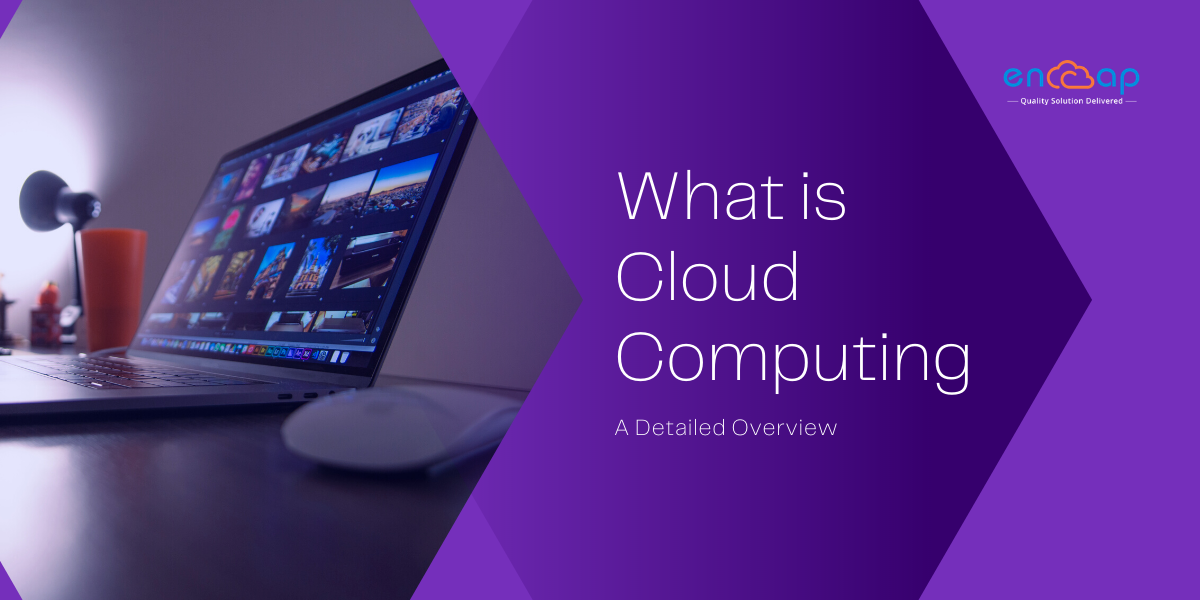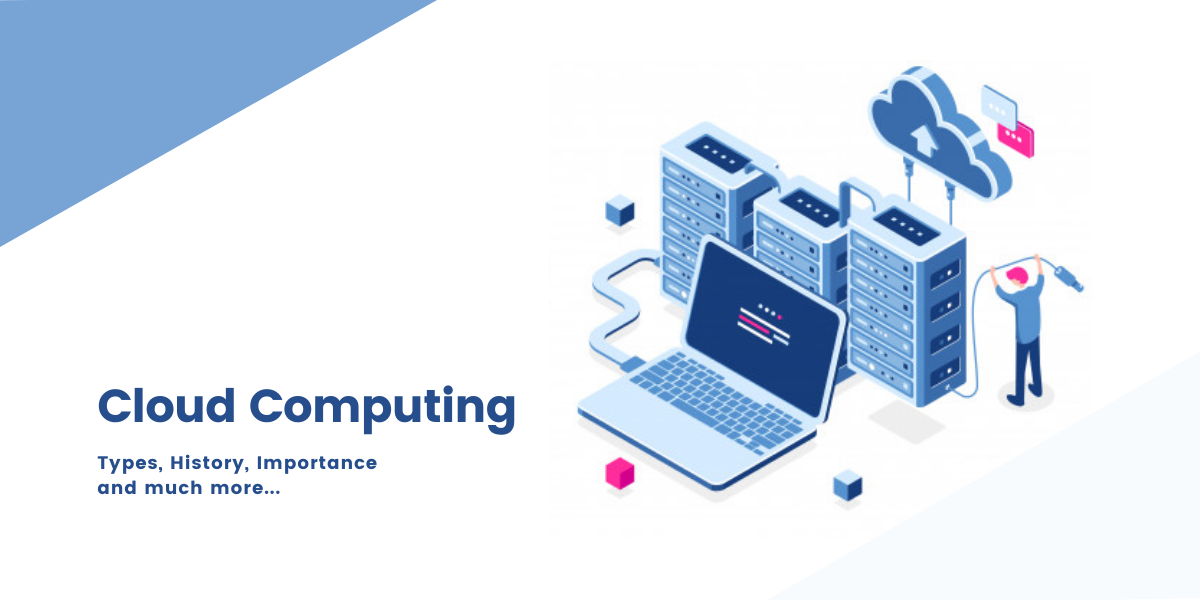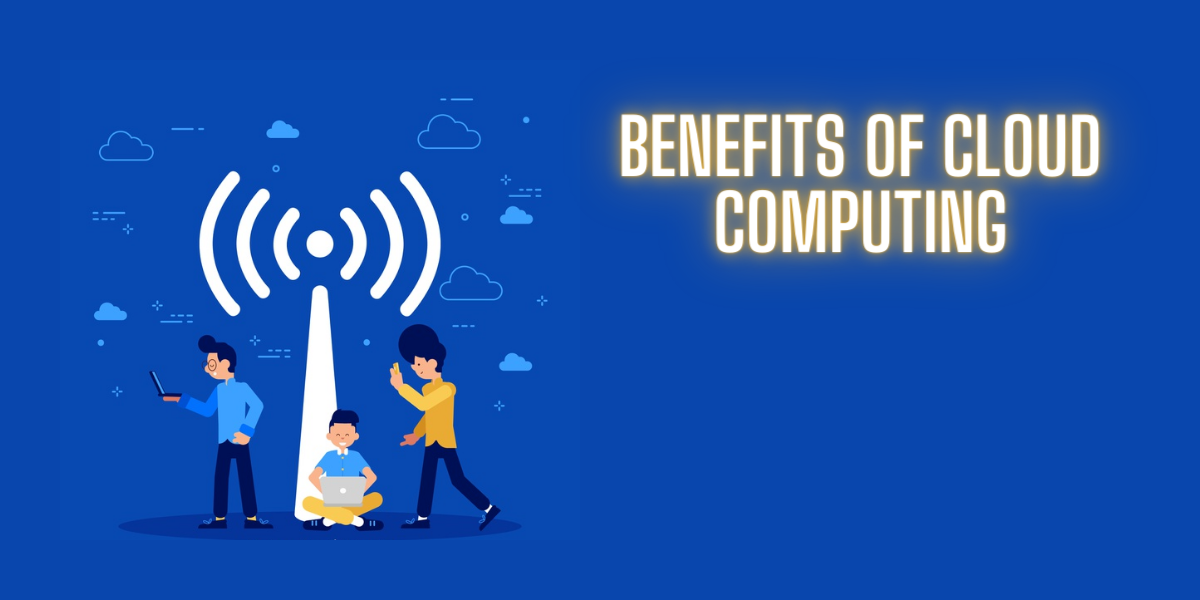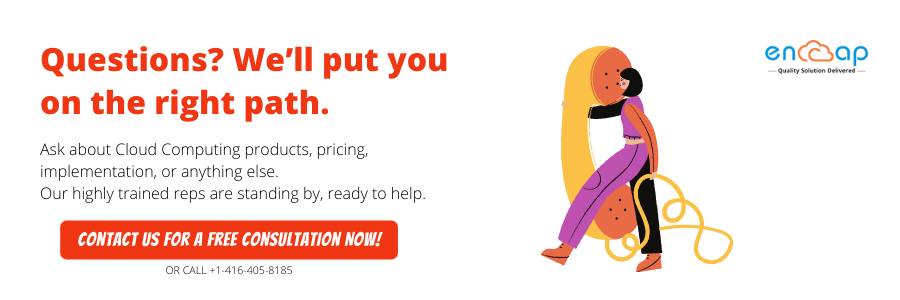What is Cloud Computing? – A Detailed Overview
Cloud computing is a computing paradigm in which a large number of computers are connected to each other in private or public networks for providing dynamically scalable infrastructure of data, files, and application storage. With the inception of this technology, the total cost of computation, content storage, application hosting, and delivery gets reduced significantly.
This technology is highly recommended because cloud computing offers a practical approach for experiencing direct cost benefits and has the potential to transform a data center from a capital intensive set up to a variable priced environment. The entire idea of cloud computing relies on a very fundamental rule and that is the re-usability of IT capabilities.
Additionally, the reason why cloud computing stands out in comparison to the traditional concepts of grid computing, utility computing, autonomic computing, and distributed computing is that it broadens horizons across organizational boundaries. An apt way to define cloud computing is as a pool of abstracted, managed and extremely scalable compute infrastructure that is capable of hosting end-customer applications.
Examples of Cloud Computing:
Cloud computing highlights a vast number of services that include customer services like Gmail or the cloud backup of photos on smartphones, which allow all enterprises to host their data and run applications in the cloud.
Another big example of cloud computing comes integrated in AWS cloud and azure cloud services. Netflix depends on cloud computing to run its video streaming service and business systems along with having a number of other organizations.
Today, cloud computing has turned into a default option for many applications. For example; software vendors are increasingly providing their applications as services on the internet as compared to the standalone products while switching to a subscription model.
Types of Cloud Services:
Irrespective of the kind of service that we might be talking about, the most popular cloud computing services such as AWS cloud and azure cloud services include a series of functions such as storage, backup, data retrieval, email, audio, and video streaming, delivering software on demand, analyzing data, etc.
The relevancy of cloud computing is such that it is used by a number of organizations ranging from big corporations to small businesses, individual consumers, and even small businesses.
Why Is It Referred To Cloud Computing?
A significant concept behind cloud computing is that the location of service and many details such as the hardware or the operating system on which it runs are mostly irrelevant to the user. With this in mind, the metaphor of cloud was borrowed from old telecoms network schematics in which the public telephone network was often represented as a cloud. This is an oversimplification of course because for many customer locations of services and data remains a serious issue.
History of Cloud Computing:
As a term, cloud computing is being used since the early 2000s, but the concept of computing as a service has been around since the 1960s. This was the time when the computer bureaus would enable companies to rent time on a mainframe, rather than having to buy a new one for themselves.
These time sharing services were mostly overtaken by the rise of PC, which made owning a computer a lot more affordable and in turn with the rise of corporate data centers where companies stored vast amounts of data.
The concept of renting access to computing power has resurfaced again and again in the application service providers, grid computing and utility computing of the late 1990s and early 2000s. This was then followed by cloud computing which really took hold with the rise of software as a service and hyper-scale cloud computing providers such as AWS cloud.
Importance of Cloud:
Building infrastructure for supporting cloud computing contributes to more than over a third of all IT costs worldwide. Simultaneously, spending on the traditional and in house IT continues to slide over as a major computing workload moves to the cloud, whether that is public or cloud services offered by the vendors or the private clouds built by enterprises themselves.
Around one-third of the IT costs will be on hosting and cloud services which indicate a growing reliance on external sources of application, management, infrastructure, and security services. The global enterprises using cloud are slated to adopt it completely by the year 2021.
Additionally, global spending on cloud services is going to reach over $260 billion since it is growing faster than the expectations of analysts. However, it is not completely clear how much demand is coming from businesses that are actually willing to move to the cloud and how much is being created by vendors who offer cloud versions of their products.
Characteristics of Cloud Computing:
– Elasticity: Companies can very easily and freely scale up as the computing must increase and scale down as the demand decreases. This eliminates the need for huge investments in the local infrastructure, which might or might not remain active.
– Pay per use: The resources are measured at a granular level allowing users to pay only for the resources and workloads that are used.
– Workload resilience: The cloud service providers very often implement redundant resources for ensuring storage and keeping the important workloads running across multiple global regions.
– Migration flexibility: Organizations can move certain workloads from and even to the cloud or different cloud platforms just as it is desired. This helps in better cost savings and using new services just as they emerge.
– Self-service provisioning: The end users can spin up the computing resources for any kind of workload on-demand. An end-user can also provision computing capabilities like server time and network storage eliminating the need for IT administrators to manage or provision resources.
– Multi-tenancy and resource pooling: Multi-tenancy enables multiple customers to share the same physical infrastructures or applications while retaining privacy and security over the data. With the help of resource pooling, the cloud providers help in servicing many customers from the same physical resources. The resource pools of cloud providers are large and flexible enough so they can service the requirements of multiple customers.
– Broad network access: A user can access the cloud data or upload data to the cloud from anywhere with the help of an internet connection and any device.
Benefits of Cloud Computing:
Cloud computing comes with many attractive benefits for businesses and end-users. Some of the most important benefits of cloud computing are:
1. Cost Savings: Using cloud computing can help in massive cost savings as organizations no longer have to spend a huge amount of money on maintaining or buying equipment. Further, this also reduces capital expenditure costs as there is no longer any need to invest in facilities, utilities, hardware, or building large data centres for accommodating growing businesses.
In addition, since growing companies do not need large IT teams for handling cloud data centre operations; they can easily rely on the expertise of the cloud provider’s team. Cloud computing cuts down any costs related to downtime. Since downtime happens rarely in cloud computing, the companies are no longer required to spend money and time fixing any issues that might be linked to downtime.
All in all, there are many reasons that can be attributed to lower costs with cloud technology. The billing model is pay as per usage and the infrastructure is not purchased which lowers the maintenance cost. The initial and recurring expenses come out to be much lower than traditional computing.
2. Increased Storage: With the huge infrastructure that is offered by all the cloud providers in the present time, maintenance, and storage of large volumes of data is a reality. Additionally, the sudden workload raises are also managed efficiently and effectively since the cloud can actually scale dynamically.
3. Disaster Recovery: Many organizations worry about data loss. Storing data in the cloud guarantees users can always access their data even if the devices like smartphones and laptops are inoperable.
With cloud-based services, organizations can recover data in the event of emergencies like power collapse or natural disasters very quickly.
4. Flexibility: Flexibility can be counted as an exceptionally significant benefit of cloud computing. With so many enterprises in the need to adapt to the changing business conditions all the more rapidly, the speed to deliver has become critical.
Cloud computing pays extreme importance on getting the applications to market at a quick pace with the use of suitable building blocks considered necessary for deployment.
5. Mobility: Storing the information in the cloud implies that the users can access it from anytime and anywhere with the help of an internet connection. This further means that the users are not required to carry any USB drives around because CDs and external hard drives are enough for accessing data.
The users can also access corporate data through smartphones and other mobile devices while enabling remote employees to stay up to date with their co-workers and customers. The end users can also recover, retrieve, and process resources in the cloud. Moreover, the cloud vendors offer all upgrades and updates automatically, which saves both effort and time.
Cloud Computing Models:
The cloud providers give services that can be majorly grouped into three important categories. These services are as below:
1. Software as a Service (SaaS): In the SaaS model, a comprehensive application is provided to the customers as a service on demand. An important instance of this service runs on the cloud and so many end users are serviced. On the side of the customers, there is absolutely no need for any direct or upfront investment in the servers or software licenses.
However, for the service providers, the costs are lowered, since only a single application is hosted and maintained. SaaS is provided by many prominent companies such as Salesforce, Zoho, Google, Microsoft, etc.
It is expected that the customer relationship management applications and enterprise resource management applications are more than likely to account for more than 60% of all cloud applications until 2021. The number of applications delivered through SaaS is massive right from CRM like Salesforce to Microsoft’s Office 365.
2. Platform as a Service (PaaS): In this service, a layer of software or the development environment is enclosed and offered as a service over which the higher levels of services can be created. The customers have all the freedom to build different applications that run on the infrastructure of the provider.
Keeping the underlying storage, virtual servers, and networking including the tools and software applications intact, the developers build the applications. This could include database management, development tools, operating systems, middleware, etc.
In order to meet the scalability and manageability requirements of the applications, the PaaS providers provide a predefined combination of application servers and OS such as restricted J2EE, Ruby, LAMP platform, etc. Some of the best examples of PaaS are Google’s App Engine and Force.com, etc.
3. Infrastructure as a Service (IaaS): IaaS can be referred to as the most important and fundamental building blocks of computing that can be rented. These are storage, networking, and virtual servers. This model is preferred by many companies that are interested in building applications from the basic level and wish to control all elements on their own.
However, this also requires companies to have the technical skills that are important for orchestrating services at that particular level. On the basis of many dedicated types of research done in the past; it has been found that IaaS users claim that using online infrastructure is a lot easier because it cuts down the time needed for deploying new applications or services while reducing the on-going maintenance costs.
IaaS offers basic computing capabilities and storage such as standardized services over the network. The storage system, networking equipment, data center space, etc. are all pooled together and made available for taking over the workload. The customer is then asked to typically deploy the software on infrastructure. Some of the examples of IaaS are AWS cloud, 3Tera, etc.
Cloud Computing Deployment Models:
There are different types of cloud models, each of which proves to be different from the other. Gaining a comprehensive understanding of these models can help in deploying applications on Public, Private and Hybrid clouds. Additionally, it will also help you in finding out the right cloud path for each organization.
1. Public Cloud: The public cloud model is mostly operated and owned by the third parties because it helps in delivering superior economies of scale to the customers as the infrastructure costs get spread amongst a mix of users while giving all individual clients a low cost, “pay as you go” model.
All the customers share a similar infrastructure pool with very limited configuration, availability variance, and security protection. Furthermore, the private cloud is supported and managed by the cloud provider. One of the most important benefits of public cloud is the fact that although it might be larger than the enterprise cloud, it has an ability to scale seamlessly and on-demand.
2. Private Cloud: The private cloud system is built exclusively for a single enterprise. The aim of the private cloud system is to address the data security and offer greater control which is mostly lacking in a public cloud. Private cloud has two major variations which are:
– On-premise Private Cloud: The on-premise private cloud also popularly known as the internal cloud is hosted within one’s own data center. This model offers particularly standardized protection and process, but it is limited in the aspects of size and scalability. The IT departments are required to incur the capital and the operational costs for all physical resources in the on-premise private cloud. It is suitable for applications that require complete configuration and control of security and infrastructure
– Externally Hosted Private Cloud: The externally hosted private cloud is the one that is built by hosting externally with a cloud provider where the provider is in charge of facilitating an exclusive cloud environment with a complete guarantee of privacy. It is the most suitable for enterprises that do not prefer a public cloud due to sharing physical resources.
3. Hybrid Cloud: The hybrid cloud model is responsible for combining both the private and public cloud models. With the implementation of a hybrid cloud, the service providers can use any third-party cloud providers in a complete or partial manner while increasing the flexibility of computing.
The hybrid cloud environment has a distinct capability of offering an on-demand and externally provisioned scale. The combination of augmenting a private cloud with the resources of a public cloud can be utilized to manage any kind of unexpected increase in the workload.
The main goal of the hybrid cloud model is to create an automated, scalable and unified environment that can take the advantage of everything that a public cloud is capable of providing while still controlling the data in an efficient manner.
4. Multi-Cloud: The multi-cloud deployment model of cloud computing allows different applications to migrate between cloud providers or to operate simultaneously over two or more cloud providers. Many organizations are increasingly adopting a multi-cloud model with the use of multiple IaaS providers.
Organizations implement the multi-cloud deployment model for many reasons. For example; it helps them in reducing the risk of a cloud service outrage or gaining competitive pricing from another provider.
Businesses and Cloud Computing:
Businesses can employ cloud computing in many different ways. While some of them maintain all applications and data on the cloud, others can use a hybrid model and keep all applications and data on private servers. When it is about offering services, some of the most prominent cloud computing services are Google Cloud, AWS cloud (Amazon Web Services), IBM Cloud, Alibaba Cloud, Microsoft Azure cloud services, etc.
AWS Cloud is completely public and includes a pay as you go, outsourced model. As the person is on the platform, you can sign up for the applications and any additional services. On the other hand, Azure Cloud services enable the clients to keep some data on their own sites.
More and more companies are adopting cloud services which is leading to a rapid growth of the cloud market. It is predicted that many organizations are more than likely to migrate the mission-critical workloads to public clouds. One of the reasons for this is the fact that business executives want to make sure that their companies can compete in the new world of digital transformation.
Furthermore, business leaders are also keen on taking advantage of the public cloud for the modern computer systems, elasticity, critical business units, and the DevOps teams. Cloud providers such as IBM and Google are focused on meeting the needs of IT enterprises by removing any barriers to public cloud adoption that might cause any IT decision-makers to restrict the adoption of the public cloud.
Conclusion:
Keeping the long history of cloud computing intact, it is still standing at a relatively early stage of adoption. Many companies are on the fence considering which applications should be moved and when. However, the usage is expected to climb only if the organizations get more comfortable with the idea of data being at a point other than a server in the basement.
That being said, the cloud vendors are increasingly on the look-out of pushing cloud computing as a medium of digital transformation instead of focusing just on the cost. Moving to the cloud can assist the companies to rethink all of their business processes and accelerate the business change by breaking down the organizational and data silos.
The adoption of cloud is definitely aimed at bringing a multitude of benefits and a streamlined working process. Hence, enterprises must take its adoption very seriously.
Encaptechno is a company that offers the best implementation of cloud services to enterprises. Our team comes with extensive experience in enabling many enterprises to adopt cloud services in a way that helps them to improve many business processes.
Get in touch to know more by calling us at +1-416-405-8185 or emailing at [email protected]





No comments